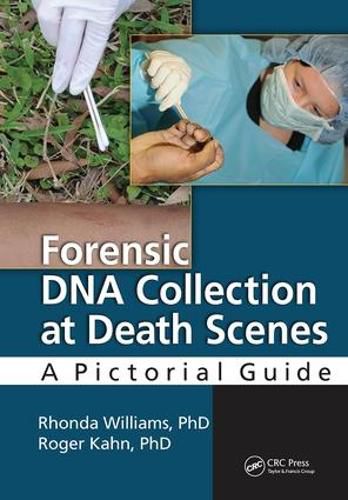Readings Newsletter
Become a Readings Member to make your shopping experience even easier.
Sign in or sign up for free!
You’re not far away from qualifying for FREE standard shipping within Australia
You’ve qualified for FREE standard shipping within Australia
The cart is loading…






DNA evidence collected from death scenes is an essential tool for law enforcement, death investigators, and forensic pathologists providing insights into cause and manner of death as well as the identification of the responsible person or persons. Ineffective collection procedures raise the risk of evidence being altered or lost during transportation of the body. Using real death scene photos and actual cases as examples, Forensic DNA Collection at Death Scenes: A Pictorial Guide provides a practical approach to evidence collection with emphasis on proper identification, collection, documentation, and preservation.
The first atlas of its kind, it demonstrates best practices for collecting DNA from decedents depending on the circumstances of the death scene and other materials present on the decedent such as clothing, bindings, and other objects. The authors discuss the success of the techniques employed in each scenario and analyze the DNA results obtained. The techniques employed at death scenes can also be applied to sexual assault cases, where DNA is collected from the body after an assault takes place.
The increasing applications of evidence-based medicine and forensic science to criminal justice and civil litigation demand that crime scene investigations be more scientific, better organized, and multidisciplinary. This atlas provides a step-by-step guide to effective, uncompromising evidence collection.
$9.00 standard shipping within Australia
FREE standard shipping within Australia for orders over $100.00
Express & International shipping calculated at checkout
DNA evidence collected from death scenes is an essential tool for law enforcement, death investigators, and forensic pathologists providing insights into cause and manner of death as well as the identification of the responsible person or persons. Ineffective collection procedures raise the risk of evidence being altered or lost during transportation of the body. Using real death scene photos and actual cases as examples, Forensic DNA Collection at Death Scenes: A Pictorial Guide provides a practical approach to evidence collection with emphasis on proper identification, collection, documentation, and preservation.
The first atlas of its kind, it demonstrates best practices for collecting DNA from decedents depending on the circumstances of the death scene and other materials present on the decedent such as clothing, bindings, and other objects. The authors discuss the success of the techniques employed in each scenario and analyze the DNA results obtained. The techniques employed at death scenes can also be applied to sexual assault cases, where DNA is collected from the body after an assault takes place.
The increasing applications of evidence-based medicine and forensic science to criminal justice and civil litigation demand that crime scene investigations be more scientific, better organized, and multidisciplinary. This atlas provides a step-by-step guide to effective, uncompromising evidence collection.